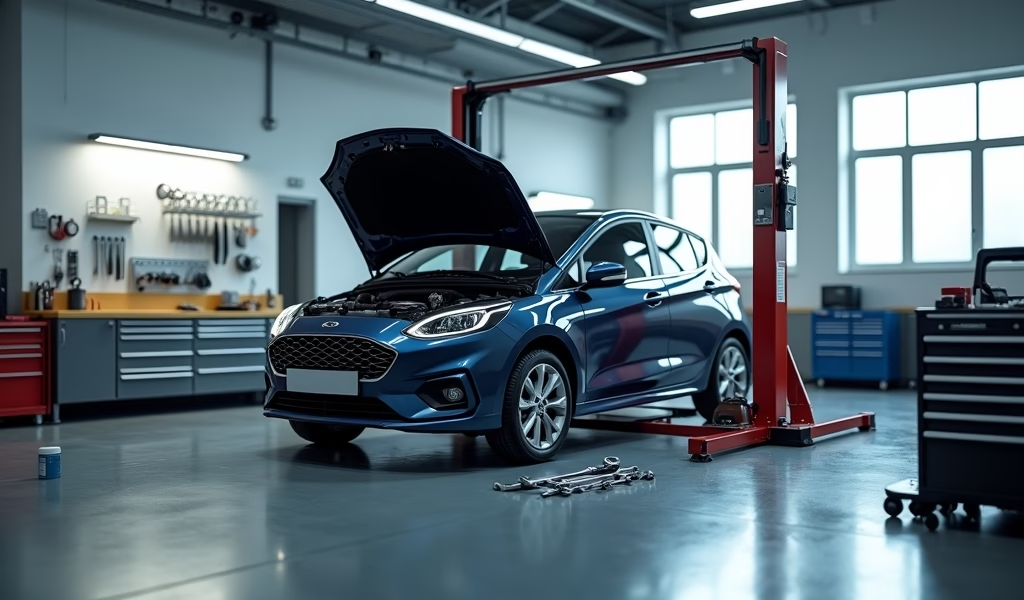Overview
This article provides seven essential DIY maintenance tips for budget car owners, emphasizing that proper care can significantly extend a vehicle’s lifespan beyond 150,000 miles while saving thousands in repair costs. Key maintenance areas include regular oil changes, filter replacements, tire care, battery maintenance, and fluid checks—all manageable tasks that transform affordable vehicles from temporary transportation into long-term investments.
Table of Contents
- Affordable Car Ownership: More Than Just the Purchase Price
- The Magic of Regular Maintenance for Budget Cars
- DIY Oil Changes: Save Money Without Sacrificing Quality
- Filter Replacements: Simple Tasks With Big Impact
- Tire Maintenance: Extending Life and Improving Safety
- Battery Care and Maintenance: Avoid Costly Replacements
- Regular Fluid Checks: The Lifeblood of Your Budget Vehicle
- Conclusion: Maximizing the Value of Your Budget-Friendly Car
- Frequently Asked Questions
Affordable Car Ownership: More Than Just the Purchase Price
Finding the best cheap cars is just the beginning of your journey toward economical transportation. After working as a mechanic for over 15 years, I’ve seen firsthand how the right maintenance approach can extend the life of budget-friendly vehicles significantly. The secret isn’t just in finding that reliable used car with a low sticker price—it’s about how you care for it afterward.
Many drivers assume that inexpensive cars are disposable, but nothing could be further from the truth. With proper care, even the most modest vehicles can provide reliable transportation for well beyond 150,000 miles. In fact, according to research from Consumer Reports, many budget models actually outperform luxury vehicles in terms of long-term reliability and maintenance costs.
The key is developing a proactive rather than reactive approach to maintenance. Let’s explore seven proven DIY maintenance tips that can help you maximize the lifespan of your affordable vehicle without breaking the bank.
The Magic of Regular Maintenance for Budget Cars
Regular maintenance isn’t just a suggestion—it’s the lifeline for any affordable car bargain. I’ve restored countless vehicles that were on their last legs simply because their owners skipped basic maintenance. The beauty of budget-friendly cars is that their simpler systems often make them easier and less expensive to maintain.
The first rule of budget car ownership is to follow the manufacturer’s maintenance schedule religiously. These schedules aren’t arbitrary—they’re carefully calculated to maximize component life and prevent catastrophic failures. You’ll find this information in your owner’s manual, usually in a clear chart format.
Don’t skip scheduled maintenance just because your car seems to be running fine. Small issues can quickly snowball into major problems. For example, a simple timing belt replacement (usually around $500-800) skipped could lead to catastrophic engine damage costing thousands. According to AAA research, skipping maintenance doesn’t save money—it costs an average of $8,500 in preventable repairs over a vehicle’s lifetime.
Create a simple maintenance log, either digitally or in a notebook kept in your glove compartment. Track oil changes, filter replacements, and other regular services. This helps ensure nothing gets overlooked and also creates a valuable service history that can increase your car’s resale value.

DIY Oil Changes: Save Money Without Sacrificing Quality
Oil changes remain the cornerstone of vehicle maintenance, especially for budget-friendly cars. After working on thousands of vehicles, I can tell you that regular oil changes have saved more engines than any other maintenance task. The good news? It’s one of the easiest DIY jobs to master.
When changing your own oil, you’ll need a few basic tools: an oil drain pan, wrench for the drain plug, oil filter wrench, funnel, and of course, the correct oil and filter for your vehicle. The entire process typically takes less than 45 minutes once you’re familiar with it.
Here’s a simple cost comparison between DIY and professional oil changes:
| Service Type | Average Cost | Annual Cost (4 changes) | 5-Year Savings |
|---|---|---|---|
| Quick Lube Shop | $45-75 | $180-300 | – |
| Dealership | $75-125 | $300-500 | – |
| DIY Basic | $25-35 | $100-140 | $400-800 |
| DIY Premium | $35-50 | $140-200 | $200-600 |
When selecting oil, don’t automatically choose the cheapest option. The cheapest Chevy car deserves quality lubricants. Always follow your manufacturer’s specifications for oil weight and quality standards (such as API ratings). Synthetic oils cost more initially but often allow for extended change intervals, potentially saving money long-term.
Remember to properly dispose of used oil—most auto parts stores and recycling centers accept it free of charge. Improper disposal is not only environmentally harmful but also illegal in most places.
Filter Replacements: Simple Tasks With Big Impact
Filters are the unsung heroes of vehicle longevity, especially in budget-friendly cars. They protect vital systems from contaminants that would otherwise cause accelerated wear. The three main filters you should regularly maintain are the oil filter, air filter, and cabin air filter.
Replacing your engine air filter is possibly the simplest maintenance task you can perform. It usually requires no tools and takes less than five minutes. A clean air filter improves fuel efficiency by up to 10% according to U.S. Department of Energy data, meaning this $15-20 part could save you significantly more at the pump over time.
The cabin air filter is equally simple to replace in most vehicles. This filter keeps the air inside your car clean, removing pollen, dust, and other contaminants. If you notice musty odors when running your AC or heater, it’s likely time for a replacement. Auto shops typically charge $40-70 for this service, but the filter itself usually costs only $15-25.
For best results, follow this filter replacement schedule:
- Oil filter: Replace with every oil change
- Engine air filter: Every 15,000-30,000 miles (inspect annually)
- Cabin air filter: Every 15,000-25,000 miles (more frequently in dusty areas)
- Fuel filter: Every 30,000-50,000 miles (varies by manufacturer)
Consider upgrading to higher-quality filters for older budget vehicles. While they cost slightly more, premium filters often capture more contaminants and may help compensate for normal engine wear in high-mileage vehicles.
Tire Maintenance: Extending Life and Improving Safety
Tires represent one of the largest ongoing expenses for any vehicle owner, but with proper maintenance, you can double their useful life. For budget car owners, this is especially crucial as tire replacement can easily run $400-800 per set.
Regular tire rotation is essential for even tread wear. Front tires typically wear faster than rear tires due to the steering load they bear. By rotating tires every 5,000-7,000 miles, you ensure they wear evenly, maximizing their lifespan. This is a job you can easily do yourself with a jack, jack stands, and a lug wrench.
Tire pressure might seem trivial, but it’s actually critical for both safety and economy. Underinflated tires reduce fuel efficiency by up to 3% and wear out significantly faster on their outer edges. Overinflated tires provide a harsh ride and wear out prematurely in the center of the tread. Check your tire pressure at least monthly using an inexpensive gauge.
Don’t forget to check wheel alignment annually or whenever you notice your vehicle pulling to one side. Proper alignment prevents uneven tire wear and improves handling and fuel economy. While alignment typically requires professional equipment, many shops offer free alignment checks that can tell you whether an adjustment is necessary.
For budget-conscious owners, consider quality all-season tires rather than specialized seasonal sets. Modern all-season tires offer impressive performance in most conditions at a fraction of the cost of maintaining two sets of tires.

Battery Care and Maintenance: Avoid Costly Replacements
Battery replacement can be an unexpected expense for budget car owners, with quality batteries costing $100-200. The good news? With proper maintenance, you can often extend battery life well beyond the typical 3-5 year range.
Corrosion on battery terminals is the enemy of reliable starting. This powdery white or greenish substance restricts electrical flow and can cause hard starting or even complete failure. Check your battery terminals regularly and clean them with a solution of baking soda and water when corrosion appears. A small wire brush makes this job easier.
If your battery has removable caps, check the electrolyte level periodically. Low levels can be topped off with distilled water (never tap water, which contains minerals that damage batteries). Maintenance-free batteries don’t require this step, which is why they’ve become increasingly popular.
During extreme weather, consider using a battery tender (also called a trickle charger) if your vehicle will sit unused for more than a week. These inexpensive devices maintain optimal charge levels without overcharging, significantly extending battery life.
If your battery is more than three years old, have it tested professionally before winter arrives. Most auto parts stores offer free battery testing services. This preventive step can save you from being stranded in cold weather when batteries are most likely to fail.
Regular Fluid Checks: The Lifeblood of Your Budget Vehicle
Fluids are quite literally the lifeblood of your vehicle, and monitoring them regularly costs nothing but can save thousands in repair bills. For budget car owners, staying on top of fluid maintenance is perhaps the most cost-effective preventive measure available.
Transmission fluid deserves special attention in budget vehicles. Automatic transmission replacements can easily exceed the value of many economy cars, yet regular fluid and filter changes (typically recommended every 30,000-60,000 miles) cost relatively little. The color of transmission fluid tells you a lot—it should be bright red or pink. If it’s brown or smells burnt, it needs immediate attention.
Brake fluid is often overlooked until problems arise. This hygroscopic fluid absorbs moisture over time, which lowers its boiling point and compromises braking performance. Check it every six months and replace it every 2-3 years. When checking, the fluid should be clear amber—if it’s dark or cloudy, it needs replacement.
Coolant/antifreeze prevents both freezing in winter and overheating in summer while also providing corrosion protection for your engine. Test your coolant’s freeze protection before winter using an inexpensive tester from any auto parts store. Complete coolant changes are typically recommended every 30,000-50,000 miles.
Power steering fluid levels should remain consistent. If you find yourself needing to add fluid regularly, you likely have a leak that should be addressed before it causes expensive steering system damage.
Create a simple monthly routine for checking all fluid levels. This five-minute inspection can alert you to developing problems before they become serious. Most fluids can be checked without tools, making this the simplest yet most effective preventive maintenance you can perform.
Conclusion: Maximizing the Value of Your Budget-Friendly Car
Owning one of the best cheap cars doesn’t mean settling for unreliable transportation or constant repairs. With these seven DIY maintenance tips, you can significantly extend the life of your budget vehicle while minimizing unexpected expenses. The key takeaway is consistency—regular, proactive maintenance always costs less than reactive repairs.
Remember that most budget-friendly vehicles are designed with simplicity in mind, making them ideal candidates for DIY maintenance. By investing a little time learning these basic skills, you’ll not only save money but also develop a better understanding of your vehicle’s needs and condition.
Start small with basic tasks like fluid checks and filter replacements, then gradually build your confidence with more involved maintenance like oil changes and tire rotations. Each skill you master represents money saved both immediately and in the long run.
The most successful budget car owners combine smart buying decisions with consistent maintenance practices. When you find that perfect affordable vehicle, commit to caring for it properly, and you might be surprised by just how many miles of reliable service it provides. After all, the cheapest car is often the one you already own—especially when it’s well-maintained.
Frequently Asked Questions
What defines a car as “cheap” in today’s market?
In today’s market, “cheap” typically refers to vehicles priced under $20,000 new or under $10,000 used. These include compact sedans, basic hatchbacks, and older model years of reliable makes.
How often should I change oil in my budget car?
Follow your manufacturer’s recommendations, typically every 5,000-7,500 miles for conventional oil or 7,500-10,000 miles for synthetic. Older budget cars might benefit from more frequent changes around 3,000-5,000 miles.
Are aftermarket parts safe to use in budget vehicles?
Quality aftermarket parts from reputable brands are generally safe and can offer significant savings compared to OEM parts. Stick with known brands and avoid the cheapest generic options for critical components.
What’s the most cost-effective way to maintain a high-mileage budget car?
Focus on preventative maintenance: regular oil changes, fluid checks, and addressing small issues before they become major. Prioritize safety-related systems like brakes and steering while being strategic about cosmetic repairs.
How can I tell if a cheap car will be reliable before buying?
Research the specific model’s reliability history through resources like Consumer Reports and owner forums. Always get a pre-purchase inspection from a trusted mechanic, and check for complete maintenance records.


Pingback: cheapest car insurance car: Pro Car Care - knowsyourcar.com